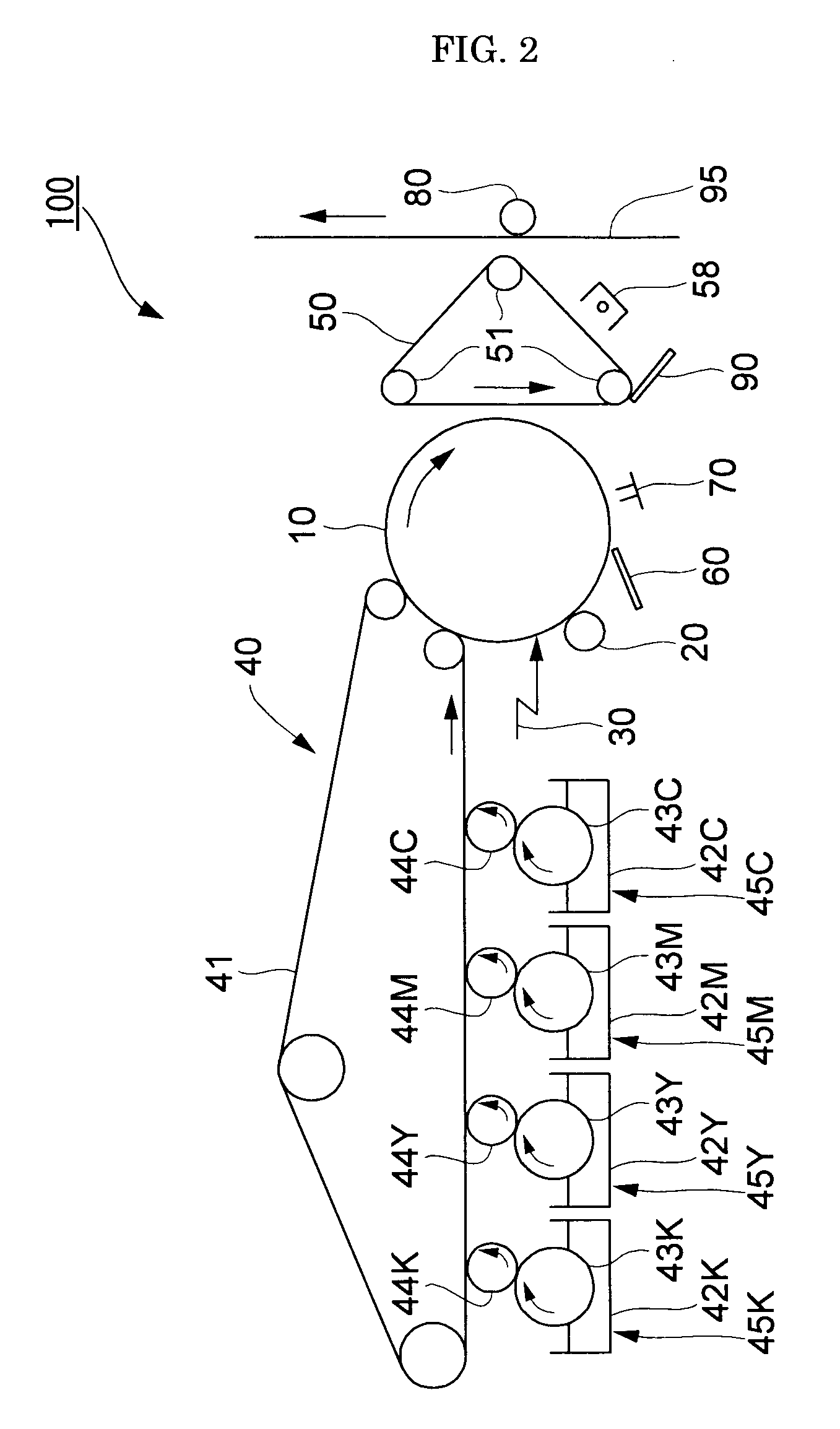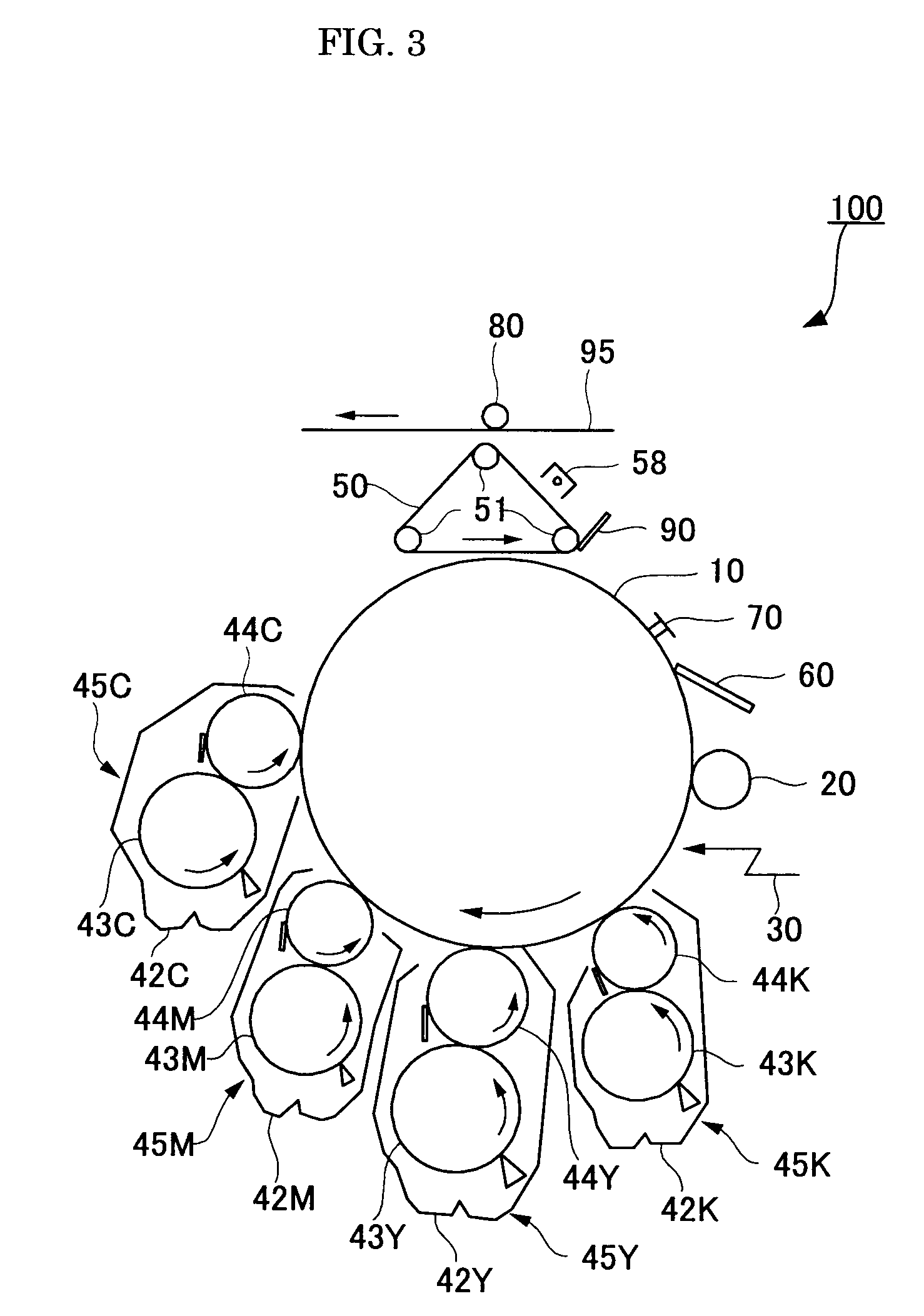Toner, production method thereof, developer, toner container, process cartridge, image forming method, and image forming apparatus
a technology of toner and charge controlling agent, which is applied in the field of toner, production method thereof, toner container, image forming method, image forming apparatus, etc., can solve the problems of reducing toner yield, setting a limit on the selection of toner materials, and difficult to uniformly disperse colorant and charge controlling agent in thermoplastic resin, etc., to achieve excellent offset resistance and avoid smears.
- Summary
- Abstract
- Description
- Claims
- Application Information
AI Technical Summary
Benefits of technology
Problems solved by technology
Method used
Image
Examples
example 1
[0336]
[0337]Toner was produced in the manner described below.
[0338]-Preparation of Solution / Dispersion of Toner Materials-
[0339]-Synthesis of Unmodified Polyester (Low Molecule Polyester)-
[0340]To a reactor equipped with a cooling pipe, an agitator and a nitrogen feed tube was added 67 parts of an ethylene oxide bisphenol A 2 mol adduct, 84 parts of bisphenol A propion oxide 3 mol adduct, 274 parts of terephthalic acid, and 2 parts of dibutyltin oxide. These ingredients were reacted for 8 hours at normal pressure at 230° C. Next, the resultant reaction solution was reacted for 5 hours under the reduced pressure of 10 mmHg to 15 mmHg, preparing a unmodified polyester.
[0341]The obtained unmodified polyester had a number average molecular weight (Mn) of 2,100, a weight average molecular weight of 5,600, and a glass transition temperature (Tg) of 55° C.
[0342]-Preparation of Master Batch (Mb)-
[0343]Using Henschel mixer (manufactured by Mitsuikozan Co., Ltd.) 1,000 parts of water, 540 par...
example 2
[0365]Toner base particles of Example 2 were produced in the same manner as in Example 1 except that in the preparation of an aqueous medium phase, polyethyleneglycol dibehenate No. 1 was changed to polyethyleneglycol dibehenate No. 2 (weight average molecular weight=2,500, melting point=52° C.).
example 3
[0366]Toner base particles of Example 3 were produced in the same manner as in Example 1 except that in the preparation of an aqueous medium phase, polyethyleneglycol dibehenate No. 1 was changed to polyethyleneglycol dibehenate No. 3 (weight average molecular weight=8,000, melting point=60° C.), and that the added amount of the fine resin particle dispersion was doubled (120 parts).
PUM
 Login to View More
Login to View More Abstract
Description
Claims
Application Information
 Login to View More
Login to View More - R&D
- Intellectual Property
- Life Sciences
- Materials
- Tech Scout
- Unparalleled Data Quality
- Higher Quality Content
- 60% Fewer Hallucinations
Browse by: Latest US Patents, China's latest patents, Technical Efficacy Thesaurus, Application Domain, Technology Topic, Popular Technical Reports.
© 2025 PatSnap. All rights reserved.Legal|Privacy policy|Modern Slavery Act Transparency Statement|Sitemap|About US| Contact US: help@patsnap.com



